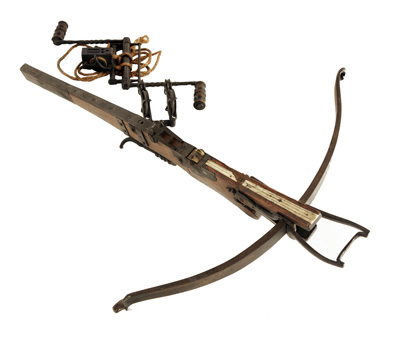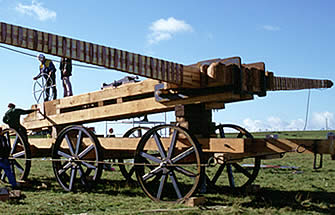The primary advantage of a compound bow is the limbs can be much stiffer than regular bows (which are essentially "tension" weapons using the spring properties of the bow limbs to store energy). Essentially, less energy is being put into the movement of the limbs and more into the bowstring, and hence the arrow.
While this may not have been expressed in those terms in the past, bowyers had plenty of empirical experience in this, and crossbows (especially steel crossbows) of enormous power were developed in the same time period that you are looking at, although instead of cams, the archer used a crank to draw these bows.
16th century steel crossbow
The evolution of bows was cut short by the introduction of gunpowder weapons, but a steel crossbow drawn by a crank has a very slow rate of fire, giving the archers only one chance to shoot at rapidly advancing horsemen (and even a limited number of shots at dismounted men at arms advancing on foot), so the pressure would be on to find a way to make drawing a steel crossbow faster while keeping the power of the huge draw weight so the quarrel can penetrate steel plate armour.
Now, a genius like Leonardo da Vinci could have conceivably developed a compound steel crossbow (as a polymath, he would already be aware of the mechanical advantage derived from pulleys and transmission systems, having developed several of his own), so without alternatives like firearms and a strong demand for rapid fire weapons to deal with fast moving armoured battlefield threats, he might have eventually hit upon combining the mechanical advantage of cams or pullypulley systems (although based on what we know about Leonardo, it is equally possible that he would have come up with something totally different......)
"Compound" crossbow? Whatever do you mean?
So given the conditions of needing a very powerful bow and high rates of fire to neutralize heavily armoured and fast moving battlefield targets, the "desire" for something along the lines of a compound bow will exist, but you would need a polymath with experience in weapons design and mechanical systems who can concptualize "how" these two ideas can come together.


